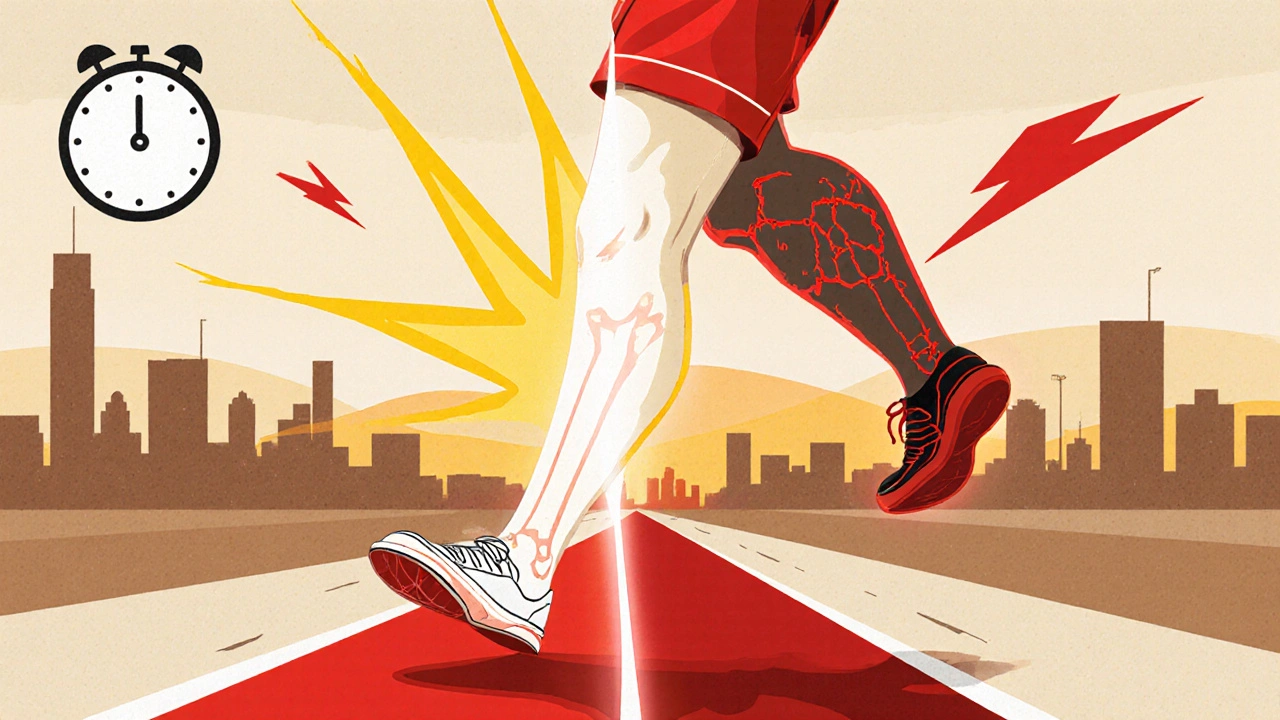Shin Splints: Causes, Relief, and What You Need to Know
When you feel a sharp or aching pain along the front of your lower leg—especially after running, jumping, or sudden increases in activity—you’re likely dealing with shin splints, a condition caused by inflammation of the muscles, tendons, and bone tissue around the tibia. Also known as medial tibial stress syndrome, it’s not just a minor annoyance—it’s your body’s way of saying you’re pushing too hard, too fast.
Shin splints often show up in people who suddenly ramp up their workouts—new runners, military recruits, dancers, or anyone switching from walking to jogging. The pain usually starts as a dull ache that gets worse during activity and may linger even when you’re resting. If ignored, it can turn into a stress fracture. What makes it tricky is that it’s not one single problem. It’s a mix of overuse, poor footwear, flat feet, tight calves, and running on hard surfaces. You can’t just pop a pill and call it fixed. Recovery needs rest, proper shoes, and gradual return to activity.
Related issues like muscle strain, a tear or stretch in the muscle fibers that can mimic shin splint pain often get confused with it. So do lower leg pain, a broad term that includes tendonitis, compartment syndrome, and nerve issues. But shin splints have a signature pattern: pain along the inner edge of the shinbone, tender to the touch, and worse when you first get up in the morning or after stopping exercise. Ice, stretching, and switching to low-impact workouts like swimming or cycling help most people. Stronger arch support or custom orthotics can make a big difference if your feet roll inward too much.
You’ll find real stories here—from runners who pushed through the pain and ended up sidelined for months, to those who figured out the right recovery plan and got back on track without surgery. Some posts cover what shoes actually help, others show simple at-home exercises that reduce pressure on the shins, and a few explain why rest isn’t laziness—it’s part of the training. No fluff. No guesswork. Just what works, based on what people have tried and what the data shows.

